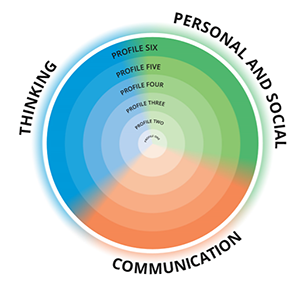 Clark would argue that media has no influence on learning and will never have an impact on learning. Technology is merely a vehicle to deliver information to students. His primary argument is that media in education can be replaced, as it is chosen based on cost and effectiveness. Clark (1994) states that “any necessary teaching method could be designed into a variety of media presentations.” (pp. 22) Clark (1994) argues that “learning is influenced more by the content and instructional strategy in a medium than by the type of medium.” (pp. 21) Finally, Clark (1994) explains “only the use of adequate instructional methods will influence learning.” (pp. 27)
Clark would argue that media has no influence on learning and will never have an impact on learning. Technology is merely a vehicle to deliver information to students. His primary argument is that media in education can be replaced, as it is chosen based on cost and effectiveness. Clark (1994) states that “any necessary teaching method could be designed into a variety of media presentations.” (pp. 22) Clark (1994) argues that “learning is influenced more by the content and instructional strategy in a medium than by the type of medium.” (pp. 21) Finally, Clark (1994) explains “only the use of adequate instructional methods will influence learning.” (pp. 27)
To an extent, I agree with Clark. Working at a distance learning school with both online and blended programs, I have experienced that technology doesn’t change the content we are teaching. For example, in my online classes there are “green books” on the course platform, these green books are essentially a digital textbook. In this instance, the type of media (digital text versus hard copy text) makes no difference in learning. Students still must read the content and derive meaning on their own.

However, education is too complicated to say that media can never influence learning. Let’s set aside the fact that this article was written over two decades ago for a moment and focus on the “never”. I strongly believe that media can be a great enhancement to the learning experience. First, students learn more when they are interested. Half of my job as a teacher is to present information in a new or entertaining way, so that students engage with the content. Media can help with this.

In present times, students can look up any fact or information they want, knowledge is at their fingertips 24/7. Yet as educators we must show them the importance of learning and education over memorization and regurgitation. These changes in society are mirrored by the changes we have seen in B.C.’s curriculum over the past few years. The focus for teachers is to create an environment where students can build skills (communication, critical/creative thinking, and personal/social responsibility) using the course content. In Clarks time, the focus was on using various skills to teach the content.

Image retrieved from: https://curriculum.gov.bc.ca/competencies
When content is the goal I fully agree with Clark, there is no media that will influence learning. However, when building skills is the goal, I believe Clark’s argument is outdated and no longer applicable to education.

Kozma believed that media had the potential to influence learning, however, we had yet to discover the connection. Also written in 1994, Kozma had no evidence to support his claim that media influenced learning. Despite the lack of evidence, Kozma wrote his article on how he believed media would influence learning in the future. Kozma (1994) argued that “learning is an active, constructive, cognitive and social process by which the learner … create new knowledge by interacting with information.” (pp.8) Kozma (1994) believes the “integration of media and method, in turn with the educational context is also important.” (pp. 16)

The key to education is getting students attention long enough to engage them in the content. Media and other technologies are very effective hooks for classroom teaching. More importantly, media becomes a common ground between students and teachers. Becker (2010) agrees that there is a digital generation gap between students and teachers. Therefore, educators can use media as a tool for engaging students in their course material. Digital technologies provide a platform, a new opportunity to engage with various educational content. Furthermore, Becker (2010) states that it is important to create “a learning environment that actively engages the learner in the task at hand.” (pp. 3)

With our new goals (core competencies) for education media is becoming more present and critical to the learning environment. I believe that media can and does influence learning. Media may not change content, but it does provide a new delivery method to engage students. In my experience, learning can only occur when students engage with the content. It also affords teachers a new platform to deliver curriculum content to students. Reaching students in a media that they use daily and understand, helps them to participate in the learning environment. Becker (2010) finishes her argument with a quote by Mann (2001) “Instructional technology only works for some kids, with some topics, and under some conditions – but that is true of all pedagogy. There is nothing that works for every purpose, for every learner, and all the time.” (pp. 4) In my opinion this is the truest statement, out of all 3 articles. There is no ONE SIZE FITS ALL, when it comes to education, regardless of what media is used. There are too many variables in education to accept a position that says, ‘media will never influence learning’, especially when the articles are no longer relevant to current society based on their publish date.

There are some instances when research conflicts with each other. I think that this is valuable, as it forces the reader to evaluate the information and come to their own conclusions. It also provides an opportunity for further examination of key issues in education. The classic Clark-Kozma debate is now outdated and irrelevant for our current education system. However, it does raise some important questions about how to effectively educate students.
Images retrieved from the public domain Pixabay
Recent Comments